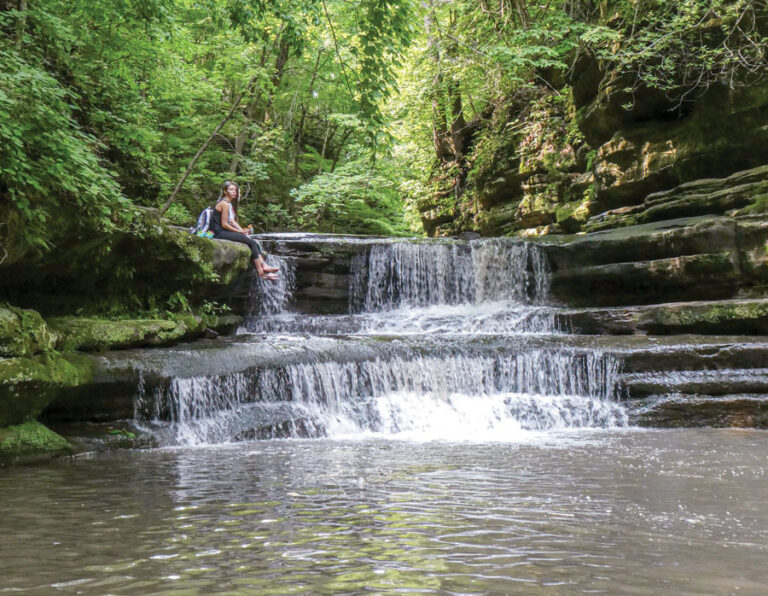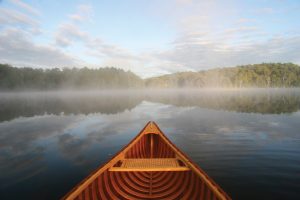Cooking over an open fire used to be the natural way to prepare food. Something about a meal cooked outside over a campfire just seems to taste better. There are several methods for outdoor cooking, but first let’s look at the basics: heat source, location and wind.
Heat source
Campfire cooking requires a clean-burning, hot fire only achieved with dry, seasoned wood. Stripping trees of green wood will not work – the fire will be smoky, burn poorly and create unnecessary pollution. If dry wood is not available, bring it with you. Many public campgrounds supply firewood. Call ahead to see what’s available.
Fire location
Pay close attention to the ground before preparing any fire. In circumstances where building the fire on a rock is not possible, ensure that the base of the fire is on bare mineral soil. A fire that is burning all evening has lots of time to burn through the organic layer of the soil and will not be extinguished with a simple bucket of water. Use previously established fire pits, if available, to avoid scarring the area with more fire pits. Another good option is a portable cooking burner which can hold skillets and pots of all sizes and allows you to cook anywhere.
Wind
Any medium to strong wind is hazardous; errant sparks can ignite a forest fire. Wind will cause coals to reduce quicker and provide less cooking time. If substantial wind shelter is unavailable, any outdoor fire is out of the question.
Get cooking
When it comes to cooking over a fire or coals, cast iron, particularly Dutch ovens, are the preferred choice. You can cook just about anything in a Dutch oven from casseroles, meats, soups and even desserts. When using cast iron cookware, charcoal is a good choice.
- To get started cooking with a Dutch oven, first prepare the coals. Use twice as many coals as the size of your Dutch oven; a 12-inch Dutch oven needs 24 to 25 coals and deep ones will require more. On windy or cold days, or when cooking a higher volume of food, more coals will be needed. Many things influence the amount of heat coals put out, so you will need to experiment.
- Arrange coals in a circle under the oven about a half inch from its edge. Coals placed on top of the oven should be arranged across and around the lid, keeping the coals as evenly apart as possible so as not to create hot spots.
- Add all ingredients to the oven according to recipe directions. Place oven on the coals, seating it as steady as possible. Cover and place the number of coals needed on the lid.
- Most foods will require rotating the oven to avoid hot spots and cook evenly. When rotating, remove the lid. You do not have to remove coals first if the lid has a lip around the edge to catch coals and dust. Use the handle to rotate it 90 degrees and take time to stir your food and check that everything is cooking properly. Replace the lid and the coals.
There are options other than cast iron when it comes to outdoor cooking. Many companies have full lines of cooking gear for the outdoors that includes everything from woks, pizza pans, rotisseries and grill pans.
Outdoor cooking is meant to be fun and isn’t reserved only for camping. Take the heat from your kitchen and enjoy the outdoors. The possibilities are endless. If it can be made inside, it can certainly be made outside.









